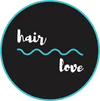Is Cetyl Alcohol Good or Bad for Your Hair ?

Have you ever thought to yourself, “Is cetyl alcohol terrible for your hair?” Cetyl alcohol, not Cetearyl alcohol, is one of the substances you’re likely to notice on the label of hair conditioners, shampoos, lotions, and skin treatments. This “alcohol,” like stearyl alcohol and cetostearyl alcohol, is an oily addition to help the conditioner distribute more freely through your hair. So let’s understand if Cetyl Alcohol Good or Bad for Your Hair?
Is Cetyl Alcohol Harmful to Your Hair?
No, according to the scientific and anecdotal material we’ve read. There are no compelling reasons to avoid using cetyl alcohol. So it all boils down to personal preference. You should use it if it works for your hair.
How Does Cetyl Alcohol Get Crafted?
Cetyl alcohol is a kind of fatty alcohol. Fatty alcohols do not act like simple alcohols — that is, they do not behave like propanol or ethanol. The term “cetyl” refers to whale oil (the Latin word for whale is Cetus), from which the material was initially obtained.
The alcohol is now made from natural vegetable oils and substances such as palm oil (thus the alternative name palmityl alcohol) and coconut oil.
Cetyl alcohol is a white, waxy solid that can be found in the form of waxy white flakes at room temperature. Those who produce soap at home will notice that creating cetyl alcohol is quite similar to saponification. Coconut oil is cooked with lye (sodium hydroxide) or a robust alkaline solution to produce cetyl alcohol.
The Role of Cetyl Alcohol in Hair Products in Cosmetics
Cetyl alcohol, like many long-chain alcohols, has several applications in the cosmetic sector. It is used to thickenen lotions and skin creams, and it is a crucial ingredient in hair conditioners, where it aids in the mixing of the conditioner’s oils and water.
The water-based and oil-based components of a conditioner would remain emulsions in the absence of alcohol (or oil floating in water). It aids in mixing these two components and is hence known as an emulsifying agent or emulsifier. Cetyl alcohol is frequently found in hair conditioners in 2% to 4%. It can be found in both rinse-out and leave-in conditioning treatments, generally near the top of the ingredient list. So when you’re using your hair detangler brush trying to spread the conditioner nicely on your hair, you’re basically spreading cetyl alcohol over your head. It is the ingredient that gives your conditioner its creamy look. Even though a leave-in conditioner appears creamy, it may not contain cetyl alcohol.
Is Cetyl Alcohol Harmful to Your Hair?
As previously stated, cetyl alcohol emulsifies the water and oils in a conditioner. Without it, the conditioner would split into watery and greasy sections in the bottle. In that instance, spreading the conditioner would be tough. As a result, the alcohol facilitates application.
However, it is also thought to perform another part in your hair care regime. After you rinse the conditioner out, some of the alcohol may stay in the form of deposits on your hair, leaving it soft. According to our research, there’s no proof that the alcohol enters the hair strand. It is long-chain alcohol containing 16 carbon atoms. So next time you’re scrunching your curls with satin short gloves and a lot of leave in conditioner, know that the ingredients will not penetrate deep inside your hair and harm them.
The majority of chemicals that may enter the hair strand are only 3 to 4 carbons long.
The chemical also does not thoroughly clean your hair. It is a non-ionic material, which means that when combined with water, it does not get charged (unlike detergents and surfactants used for washing). Cetyl alcohol is also a surfactant (a substance that allows solids to be readily wetted). However, because it is not “charged,” it cannot bind with dirt and lubricants to clean.



